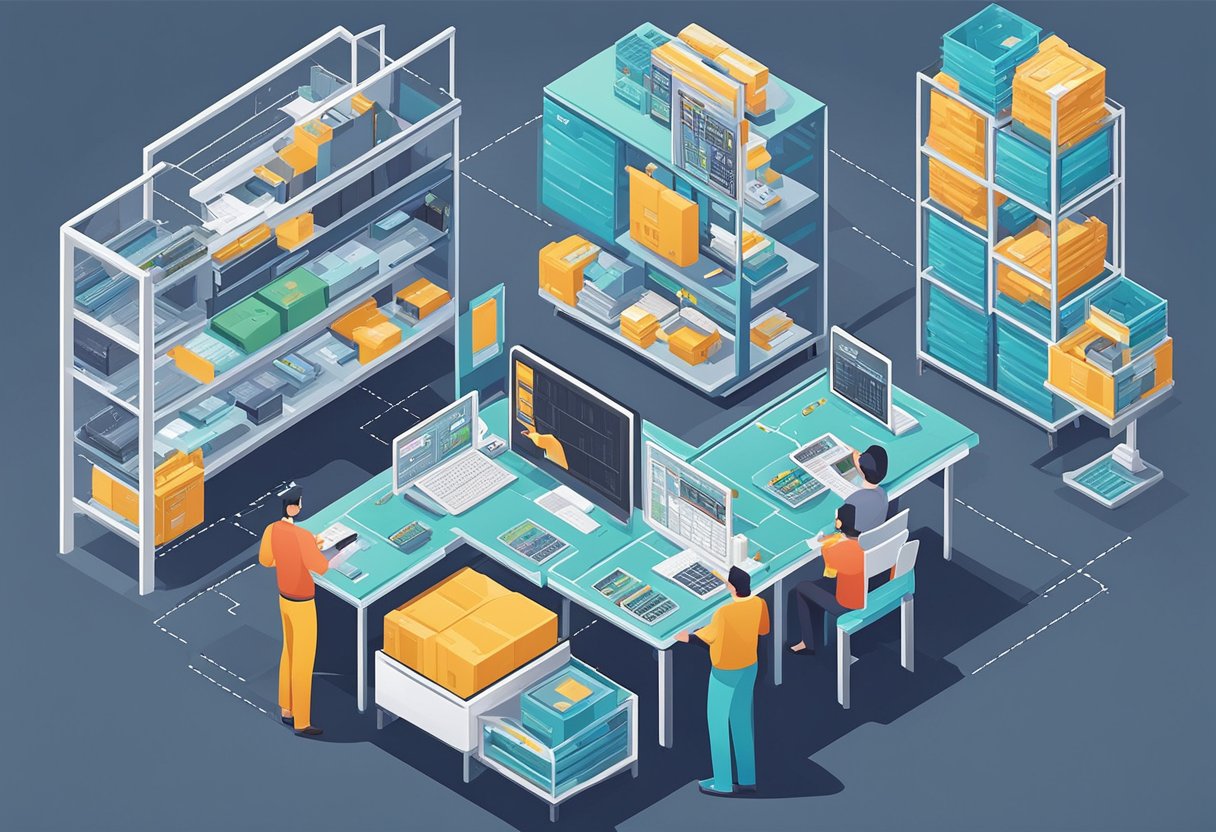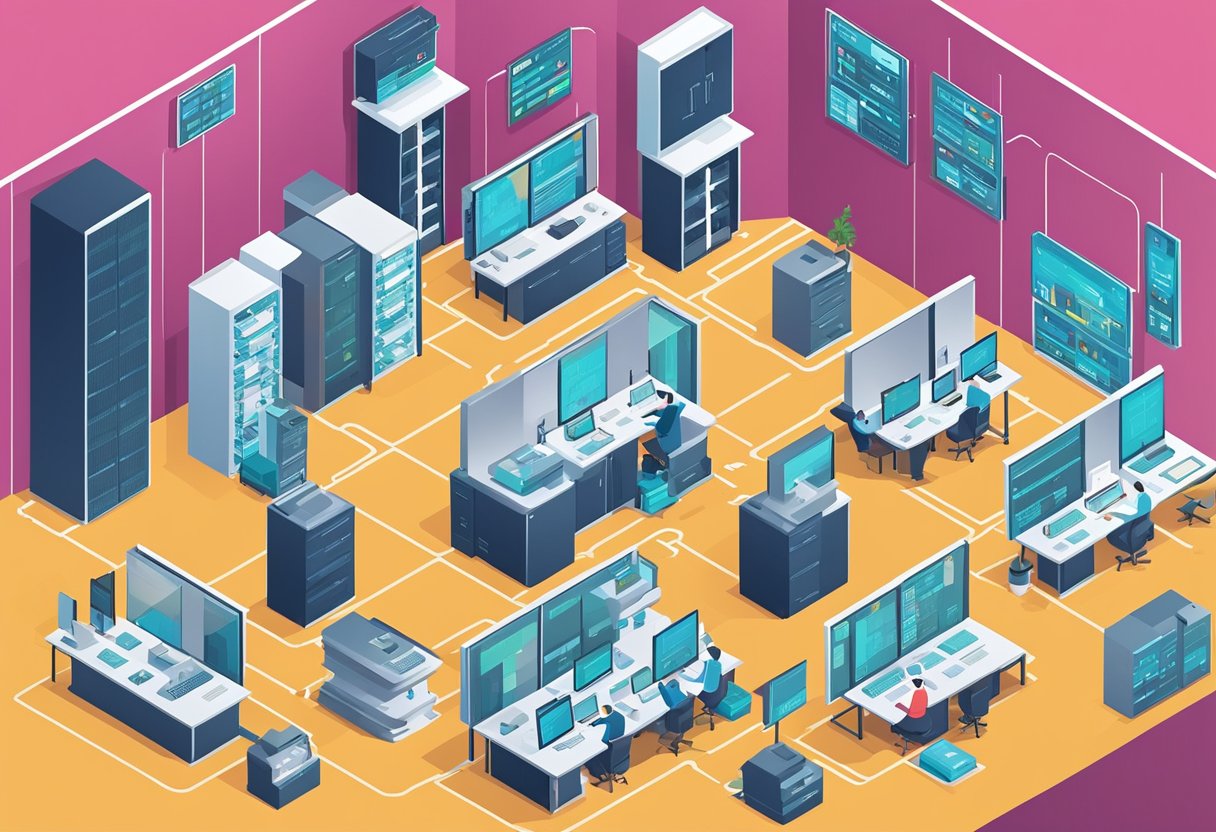Real-Time Gross Settlement Systems in Post-Trade: A Comprehensive Overview
Our comprehensive overview explores real-time gross settlement systems and their impact on post-trade operations.

Real-Time Gross Settlement (RTGS) systems have become essential to the post-trade process in financial markets. They are specialist funds transfer systems that enable the transfer of money or securities from one bank to another on a real-time and gross basis, reducing settlement risk. This means that payment transactions are settled as soon as they are processed, without any waiting period.
Understanding Real-Time Gross Settlement Systems is crucial for anyone involved in financial markets and systems. These systems provide a critical foundation for the wholesale settlement associated with financial market infrastructures. They are designed to enable the continuous process of settling payments on an individual order basis without netting debits with credits across the books of a central bank. This ensures that the transfer of funds is immediate, final, and irrevocable.
Key Takeaways:
- Real-Time Gross Settlement (RTGS) systems are specialist funds transfer systems that enable the transfer of money or securities from one bank to another on a real-time and gross basis, reducing settlement risk.
- Understanding Real-Time Gross Settlement Systems is crucial for anyone involved in financial markets and systems, as they provide a critical foundation for the wholesale settlement associated with financial market infrastructures.
- The future of RTGS will likely be influenced by innovations in distributed ledger technology and blockchain, and challenges around regulation and compliance will need to be addressed.
Understanding Real-Time Gross Settlement Systems

Real-Time Gross Settlement (RTGS) is an electronic payment system that enables real-time money transfers between financial institutions on a gross basis. In an RTGS system, every transaction is processed individually and settled immediately in central bank money without netting debits with credits across a bank's books. This means each transaction is paid one-to-one without waiting for other transactions to be completed.
RTGS systems are typically used for high-value and time-critical payments, such as interbank transfers, securities settlements, and large corporate payments. They are designed to minimize settlement risk, which is the risk that one party in a transaction will fail to meet its obligations, leading to losses for the other party.
In an RTGS system, settlement occurs in central bank money, which is the central bank's liability and is considered the safest. This means that settlement in an RTGS system is final and irrevocable, and the transaction has no credit risk.
Central banks or other financial institutions operate RTGS systems, typically only accessible to banks and other financial institutions that meet specific eligibility criteria. These eligibility criteria may include minimum capital requirements, creditworthiness, and adherence to specific operational and technical standards.
Overall, RTGS systems play a critical role in the post-trade process by ensuring that high-value and time-critical payments are settled safely, efficiently, and timely.
Role in Financial Markets and Systems

Real-Time Gross Settlement (RTGS) systems play a crucial role in financial markets and systems, including settling financial and other transactions. The demand for central bank deposit liabilities, also known as reserves or significant bank money, is a function of the transaction needs of institutions active in the financial markets, particularly the desire to use a safe and efficient payment system.
RTGS systems provide a real-time mechanism for transferring large-value payments between financial institutions, with final and irrevocable settlement. These systems are essential for maintaining market liquidity and financial stability, as they enable the timely and secure settlement of wholesale payments, which are typically large-value and time-critical. By providing a safe and efficient payment system, RTGS systems reduce counterparty credit risk and facilitate the smooth functioning of financial markets.
In addition to their role in wholesale payments, RTGS systems have implications for retail payments. The availability of real-time settlement can improve the efficiency of retail payment systems, particularly for time-critical transactions such as bill payments and remittances. Using RTGS systems for retail payments can also reduce the risk of settlement failure and improve the overall safety and soundness of the financial system.
Overall, RTGS systems are a critical component of market infrastructure, providing a safe and efficient means for settling financial transactions. As such, they are essential in maintaining financial stability and facilitating market liquidity in wholesale and retail payment systems.
Impact on Securities and Capital Markets

Real-time gross settlement (RTGS) systems have the potential to impact securities and capital markets significantly. One of the main benefits of RTGS is reducing settlement risk, which refers to the risk that one party fails to deliver securities or funds to another party, leading to a default. By settling transactions in real time, RTGS systems mitigate this risk, which can increase confidence in the securities markets and reduce the need for collateral.
However, there are also potential downsides to RTGS systems. For example, they may increase liquidity risk, which refers to the risk that a party cannot meet its obligations due to a lack of funds or securities. With RTGS, parties must have sufficient funds or securities in their accounts to settle transactions in real time, which can strain liquidity.
Another potential downside is the loss of netting benefits. Netting is offsetting the value of securities or funds owed between parties in a transaction, which can reduce the overall amount of funds or securities that need to be exchanged. With RTGS, netting is impossible since transactions are settled in real-time, which can increase the amount of funds or securities that need to be exchanged and reduce efficiency.
Despite these potential downsides, RTGS systems have been widely adopted in securities and capital markets. For example, the Federal Reserve operates the Fedwire Funds and Fedwire Securities systems, which are RTGS systems used for settling securities transactions in the United States. The Depository Trust & Clearing Corporation (DTCC), which provides clearing and settlement services for securities transactions, has also explored using RTGS systems to accelerate settlement times.
Overall, the impact of RTGS systems on securities and capital markets depends on various factors, including the specific system being used, the parties involved, and the overall market conditions. While there are potential downsides to RTGS, they can also significantly reduce settlement risk and increase efficiency.
Regulation and Compliance in RTGS

Real-Time Gross Settlement Systems (RTGS) are subject to various regulatory frameworks and compliance requirements. Regulatory bodies, such as central banks, oversee the operation of RTGS systems to ensure that they comply with relevant laws and regulations. These regulations protect consumers, mitigate credit and market risks, and meet margin requirements.
Regulators play a critical role in ensuring RTGS systems operate safely and soundly. They set out rules and guidelines for the operation of these systems, including requirements for settlement finality, collateral and margin requirements, and risk management. They also oversee compliance with these rules and guidelines and have the power to take necessary enforcement action.
Consumer protection is another essential aspect of RTGS regulation. Regulators ensure that RTGS systems have appropriate safeguards to protect consumers from fraud and other forms of abuse. They also provide consumers with clear and transparent information about the fees associated with using these systems.
Credit and market risks are also important considerations in regulating RTGS systems. Regulators require RTGS operators to have robust risk management frameworks to mitigate these risks. This includes collateral and margin requirements, stress testing, and other risk management measures.
Margin requirements are another essential aspect of RTGS regulation. Regulators require RTGS operators to have appropriate margin requirements to ensure participants have sufficient funds to cover their obligations. This helps reduce the risk of default and ensures that transactions can be settled promptly.
In conclusion, regulation and compliance are critical components of the operation of RTGS systems. Regulators play a crucial role in ensuring these systems operate safely and soundly, with appropriate safeguards to protect consumers and mitigate credit and market risks. Compliance with these regulations is essential to maintaining the integrity of these systems and ensuring that they continue to function effectively.
Influence of Distributed Ledger Technology and Blockchain

Distributed Ledger Technology (DLT) and blockchain have the potential to revolutionize the post-trade settlement process. DLT can provide a secure and transparent platform for the exchange of assets, reducing the risk of fraud and errors. Blockchain technology, a type of DLT, allows for the creation of intelligent contracts that can automate the settlement process, reducing the need for intermediaries and increasing efficiency.
One of the critical benefits of DLT and blockchain technology is tokenization. Tokenization is the process of representing assets as digital tokens on a blockchain. This allows for the easy transfer of ownership and enables fractional ownership of assets. Tokenization can also improve liquidity and reduce the cost of trading.
DLT and blockchain technology can also improve the speed and efficiency of settlement. Real-time gross settlement (RTGS) systems on distributed ledgers can provide near-instantaneous settlement, reducing the need for lengthy reconciliation processes. This can significantly reduce settlement risk and improve the overall efficiency of the post-trade process.
Smart contracts are another critical feature of blockchain technology that can improve the post-trade settlement process. Smart contracts are self-executing contracts with the terms of the agreement between buyer and seller being directly written into lines of code. This can automate the settlement process, reducing the need for intermediaries and increasing efficiency.
In summary, DLT and blockchain technology can transform the post-trade settlement process. Tokenization, real-time gross settlement, and smart contracts are just a few features that can improve the settlement process's efficiency, transparency, and security. As the technology evolves, it may become the new standard for post-trade settlement in the financial industry.
Role of Central Banks and Financial Institutions

Real-time gross settlement (RTGS) systems are critical for the wholesale settlement associated with post-trade activities. Central banks play a crucial role in ensuring the smooth functioning of these systems. They act as the settlement agent for financial institutions and ensure that funds are transferred securely and timely.
Central banks also maintain central bank reserves, which facilitate interbank settlements. These reserves are held by financial institutions to meet their liquidity needs and to settle their payment obligations. Central banks monitor the level of reserves held by financial institutions to ensure that they have sufficient funds to pay their obligations.
Recently, there has been a lot of discussion around central bank digital currencies (CBDCs) and their potential role in RTGS systems. CBDCs are digital currencies issued by central banks and can be used for payments and settlements. The Bank of England and the European Central Bank are currently exploring the potential benefits and risks of CBDCs.
Financial institutions also play a critical role in RTGS systems. They participate in these systems and use them to settle their payment obligations. Financial institutions need sufficient liquidity to pay their payment obligations and meet regulatory requirements. They also need to use risk management frameworks to manage the risks associated with RTGS systems.
In conclusion, central banks and financial institutions play a critical role in ensuring the smooth functioning of RTGS systems in post-trade activities. They must work together to ensure funds are transferred securely and on time. The potential role of CBDCs in RTGS systems is an area of active research and development.
The Future of RTGS: Innovation and Challenges

Real-Time Gross Settlement (RTGS) systems have been an integral part of the financial industry for decades, and they continue to evolve to meet the market's needs. The future of RTGS is expected to be driven by innovation and digital transformation, as well as challenges related to volatility and new forms of currency.
One area of innovation in RTGS is the adoption of digital currencies, including stablecoins. These digital assets can reduce settlement times and costs, increase transparency, and improve efficiency. However, their adoption also challenges regulatory compliance, security, and interoperability.
Another area of innovation is digital innovation, including distributed ledger technology (DLT) and fintech solutions. DLT has the potential to provide a more secure, transparent, and efficient settlement process, while fintech solutions can improve the customer experience and reduce costs. However, these innovations also bring scalability, interoperability, and regulatory compliance challenges.
Volatility is also a challenge for RTGS systems, particularly in the context of digital currencies. The value of these assets can fluctuate rapidly, creating settlement risks and operational challenges. To address this issue, some RTGS systems are exploring using central bank digital currencies (CBDCs), designed to be more stable and less volatile than other digital assets.
In conclusion, the future of RTGS is expected to be driven by innovation and digital transformation, as well as challenges related to volatility and new forms of currency. While these changes bring increased efficiency and transparency opportunities, they also bring regulatory compliance, security, and interoperability challenges. To succeed in this changing landscape, RTGS systems must be agile, adaptable, and innovative.


